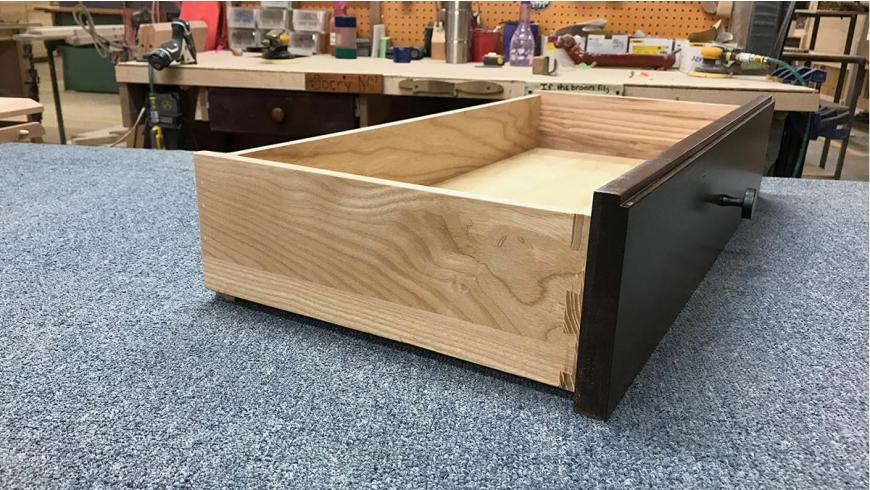An Open And Soft-Close Lesson On Well-Made Drawers

Watch any of the popular antiques programs and you’ll inevitably see the experts who evaluate furniture focus on the drawers. There’s a good reason for that. The quality of a drawer box reveals worlds about the craftsmanship of the piece and the values of its maker.
“Drawers are the moving parts of wood furniture,” said Gat Caperton. “When not built properly, they are the first things to fail. I’m always disappointed when nice furniture is manufactured with cheap drawers. It takes a lot of the magic away. It’s the same feeling when you discover that a pretty surface is nothing more than a veneer on plywood. The authenticity is gone.”
The first indication of authenticity? Joinery; look for dovetail joints. “The drawer front is almost always the first point of failure due to the forces of opening and closing,” Gat said. “Dovetail joints interlock the drawer front to its sides and will essentially outlast any other joint.”
When crafting drawer sides, Gat Creek uses solid ash, an extremely stable and durable hardwood. For the drawer bottom, another area of potential failure, we select 3/8-inch wood. “To save money, most manufacturers use thin quarter-inch plywood for their drawer bottoms,” Gat said. “This started sometime in the ‘70s and became the default standard, unfortunately. It forces manufacturers to rationalize the extra glue and corner blocks they require to strengthen their drawers. The fact is, our three-eighths inch wood does cost more. It also produces a stronger, more stable and longer-lasting drawer than slapping extra glue and adding corner blocks to thin plywood.”
Material quality and joinery aren’t the only checkpoints for identifying a superior drawer box. Pay attention to the hardware that connects the drawer to the case. For instance, we choose soft-close under mount guides for smooth, rattle-free performance. To accommodate file storage in our home office products, side mount guides are how we roll.
We’re not telling you what to buy, just how to buy. Always keep in mind that some manufacturers know that what you can’t see often goes unexamined and so they take short cuts and use cheaper materials and hardware where they think you’ll never look. Always open the drawers and have a close look.
